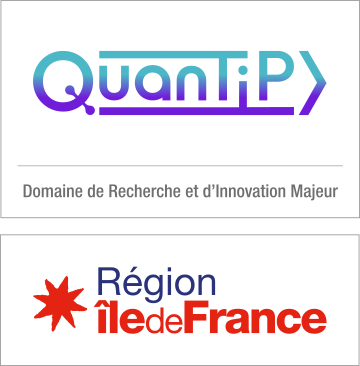Physics and potential for quantum technologies of KTaO3 two-dimensional electron gases
Context & Research
Superconductivity, ferroelectricity, quantum dots just like SrTiO3 (STO), KTaO3 (KTO) is a quantum ferroelectric with a dielectric constant that follows a Curie-Weiss law divergence but does not undergo a ferroelectric phase transition. Instead, it develops quantum fluctuations whose influence on phonon dispersion, electron-phonon coupling are not well understood. Further, minute electron doping in KTO and STO induces a metallic state with high mobility. However, while superconductivity is found in bulk STO and STO 2D electron gases (2DEGs), only KTO 2DEGs are superconducting. In addition, while the critical temperature in STO and STO 2DEGs reaches 300 mK for all orientations, in KTO 2DEGs it strongly depends on orientation, reaching 2.2 K in (111)-oriented KTO 2DEGs. Both STO and KTO 2DEGs display Rashba spin-orbit coupling, but the Rashba coefficient is 5-10 times larger in KTO 2DEGs.
This panorama opens several important questions regarding:
(i) the connection between Rashba SOC and superconductivity, possibly leading to topological superconductivity in KTO 2DEGs;
(ii) the role of the ferroelectric fluctuations – and the ensuing modified phonon dispersion – on the pairing mechanism;
(iii) the nature of charge carriers in the normal state (polarons, bipolarons, electron pairs?);
(iv) the exploitation of the unusual electronic properties of these 2DEGs for quantum information technologies.
More specifically, the project will target the following objectives: Can we understand the mechanism for SC in KTO 2DEGs (and perhaps also in STO) and its orientational dependence ? Can we harness KTO 2DEGS for quantum technologies ? Using (i) topological superconductivity and (ii) quantum dotsoperating electron pairs.
This PhD thesis project will address these burning questions through a synergetic approach combining condensed matter theory, quantum materials science and experimental quantum physics. The project will involve the Dept. of Physics of the University of Chicago (Peter Littlewood) and two French partners, namely the Laboratoire Albert Fert in Palaiseau (Manuel Bibes) and the LPEM of ESPCI in Paris (Nicolas Bergeal).
The project is sponsored by the U.Chicago-CNRS Research Collaboration Program, with the candidate salary (2135 € gross per month) paid by CNRS and a 15 k€ travel budget paid by U. Chicago. The candidate will spend a significant part of the thesis at U. Chicago, notably to perform the theoretical activities.
Method : thin film growth by sputtering and pulsed laser deposition; UV and e-beam lithography; magnetotransport at low T (50 mK) and high magnetic field (9 T); estimate the superconducting transition temperature using Eliashberg theory based on a model of electron-phonon coupling.
Supervision :
Manuel Bibes, Lab. Albert Fert, CNRS, Thales, U. Paris-Saclay, Palaiseau (France) manuel.bibes@cnrs-thales.fr
Peter B. Littlewood, U. Chicago, Dept. Physics, Chicago (USA) littlewood@uchicago.edu
Nicolas Bergeal, LPEM, ESPCI, Paris Sciences et Lettres, Paris (France) nicolas.bergeal@espci.fr
laboratoire-albert-fert.cnrs-thales.fr / oxitronics.cnrs.fr
physics.uchicago.edu
www.lpem.espci.fr
